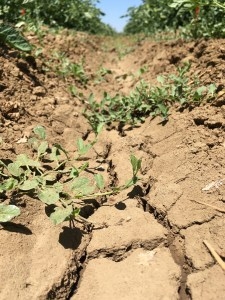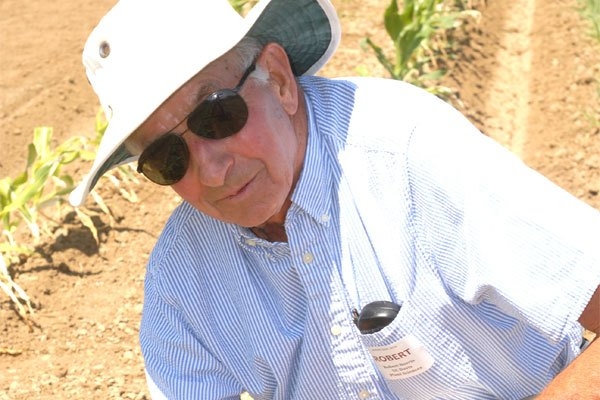From California Ag Today by Patrick Cavanaugh, Farm News Director :: Aug. 8, 2016
Vigilant Seed Bank Reduction: Whatever it takes, don't let weeds set seed.
By Patrick Cavanaugh, Farm News Director
For the past 15 years, Robert Norris, professor emeritus and vegetable crops weed specialist, UC Davis Department of Plant Sciences, has continued to attend Weed Day each year at UC Davis and to contribute weed photography for CalPhotos, a UC Berkeley Digital Library Project photo database of world-wide plants, animals, landscapes, and other natural history subjects developed to provide a testbed of digital images for computer science researchers to study digital image retrieval techniques. Norris was involved with initiating the Plant Protection and Pest Management Graduate Program at UC Davis.
“I've been a botanist since I was 14 years old,” Norris said, “and I still have a lot of passion regarding weed control.” Norris has a strong and steady philosophy on weed control and it all comes down to seeds. “The last 25 years of my work, I looked at population dynamics of weeds, like seed longevity in the soil and what we call the size of the seed bank also known as the seed production by weeds. That's really where I spent most of my time.
“I found that most people have a very poor idea of how many seeds are produced by a weed. This led me to question some of our current management philosophies; namely, the one that comes out of entomology—the use of thresholds (or how many weeds need to be present before treating them),” noted Norris. “I felt that for weed science, thresholds were not the way to go, and my position has been vindicated by the problems we've run into using thresholds.”

“My bottom line for about 30 years now is: Don't let the weeds set seed. Whatever it takes, don't let them set seed,” Norris said. If you follow that philosophy, Norris said after a while you drive the seed bank down.
“Many people don't realize this, but some of our really big growers got on to it a long time ago. One farming operation I worked with for years, J. G. Boswell Co., with most of its land in Kings County. “I knew the manager in the late '50s, into the '70s. He now is retired now, but he came to this conclusion himself back in the late '50s,” Norris said. “I haven't been on Boswell's property now for 20 years, because I retired. However, if you go down there, you will not see a weed problem, at least not like most growers.”
